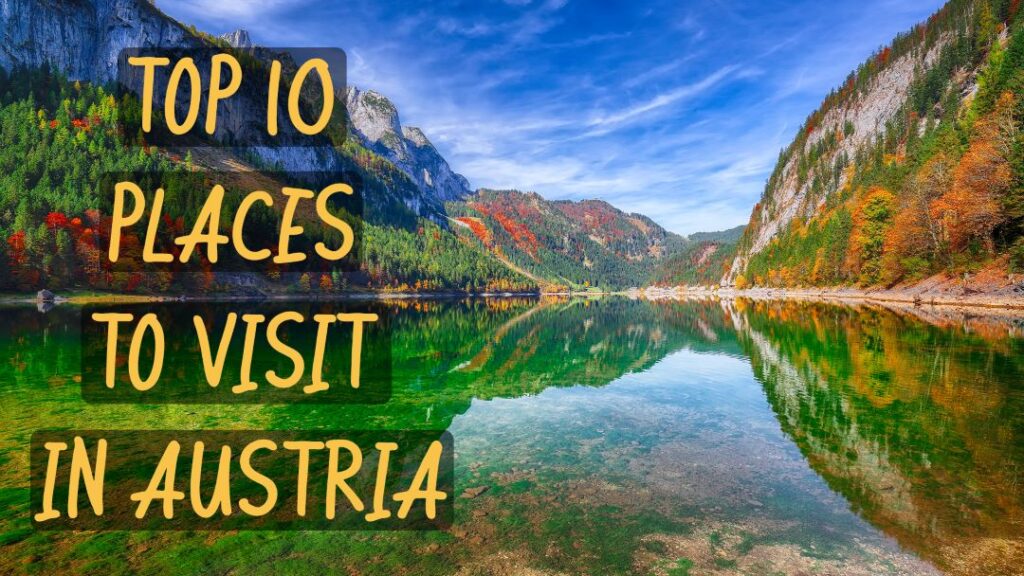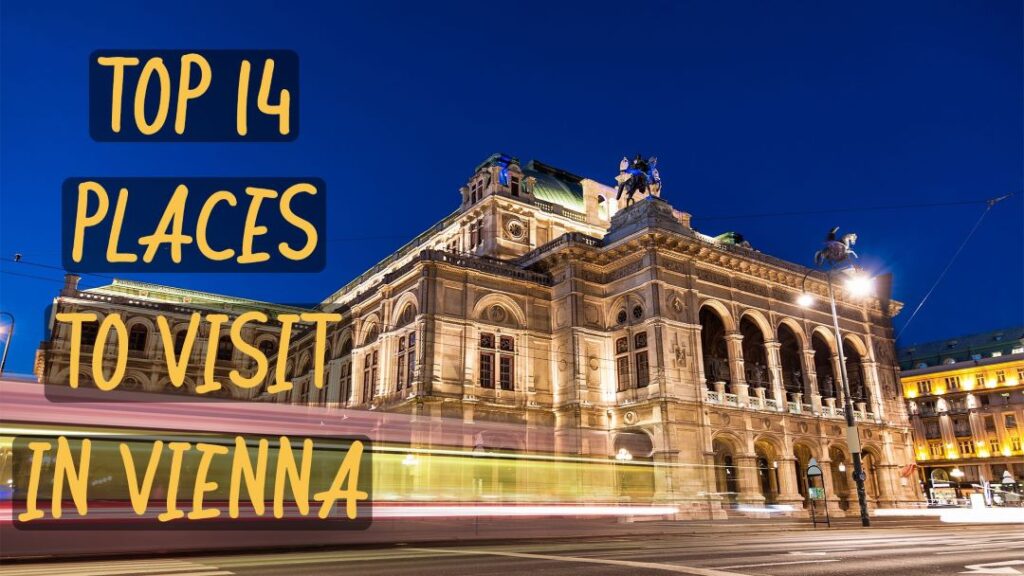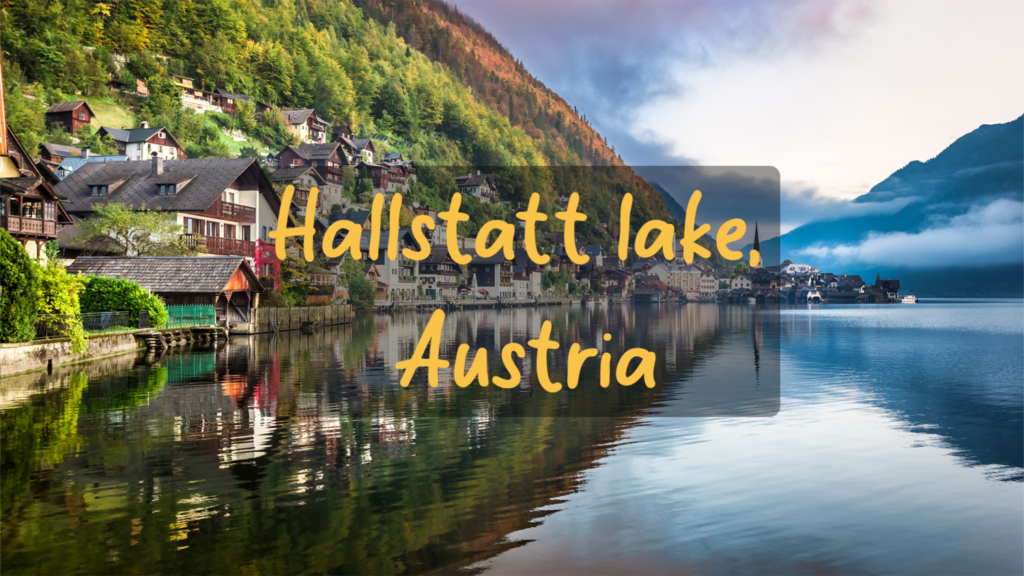Austria is a country rich in history, culture, and natural beauty. From grand palaces to stunning lakes and majestic mountains, there is something for everyone. In this article, we will take you on a journey through the top 10 famous places to visit in Austria. These must-see destinations showcase Austria’s charm and elegance. Whether you’re a history buff, a nature lover, or someone who appreciates fine architecture, these places will leave you spellbound. Get ready to discover the wonders of Austria!
1. Schönbrunn Palace
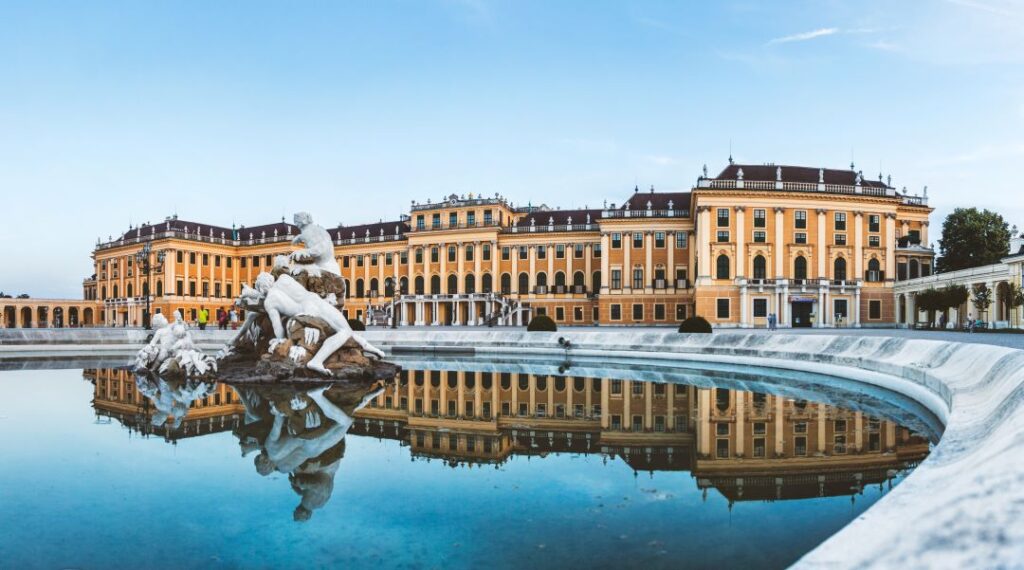
Schönbrunn Palace is one of Austria’s most beautiful and historic sites. It was the summer residence of the Habsburg rulers. The palace boasts 1,441 rooms and is surrounded by magnificent gardens. Empress Maria Theresa lived here, and the palace has seen many grand events. Its Baroque architecture and lavish interiors are breathtaking.
The palace also has the world’s oldest zoo, the Schönbrunn Zoo. A visit here feels like stepping back in time. The gardens are perfect for a leisurely stroll, and the Gloriette offers stunning views of Vienna. Schönbrunn Palace is a must-visit for anyone interested in history and architecture. Its rich past and grand design make it a highlight of any trip to Austria.
Address: Schönbrunner Schloßstraße 47, 1130 Vienna, Austria
Opening Times: Daily, 8:30 AM – 5:30 PM
Cost of Entry: €18 – €22, depending on the tour selected
2. Hofburg Palace

Hofburg Palace, located in the heart of Vienna, is a symbol of Austrian heritage. It served as the winter residence of the Habsburgs. The palace complex is vast, housing museums, chapels, and the Imperial Apartments. It was here that Emperor Franz Joseph and Empress Elisabeth (Sisi) lived. The palace’s architecture showcases Renaissance, Baroque, and Gothic styles.
Visitors can explore the Sisi Museum, which provides a glimpse into the life of the beloved empress. The Spanish Riding School, known for its Lipizzaner horses, is also located here. Hofburg Palace is not just a historic site but a cultural hub. Its grandeur and historical significance make it a must-see.
Address: Michaelerkuppel, 1010 Vienna, Austria
Opening Times: Daily, 9:00 AM – 5:30 PM
Cost of Entry: €15 – €18, depending on the ticket option
3. St. Stephen’s Cathedral
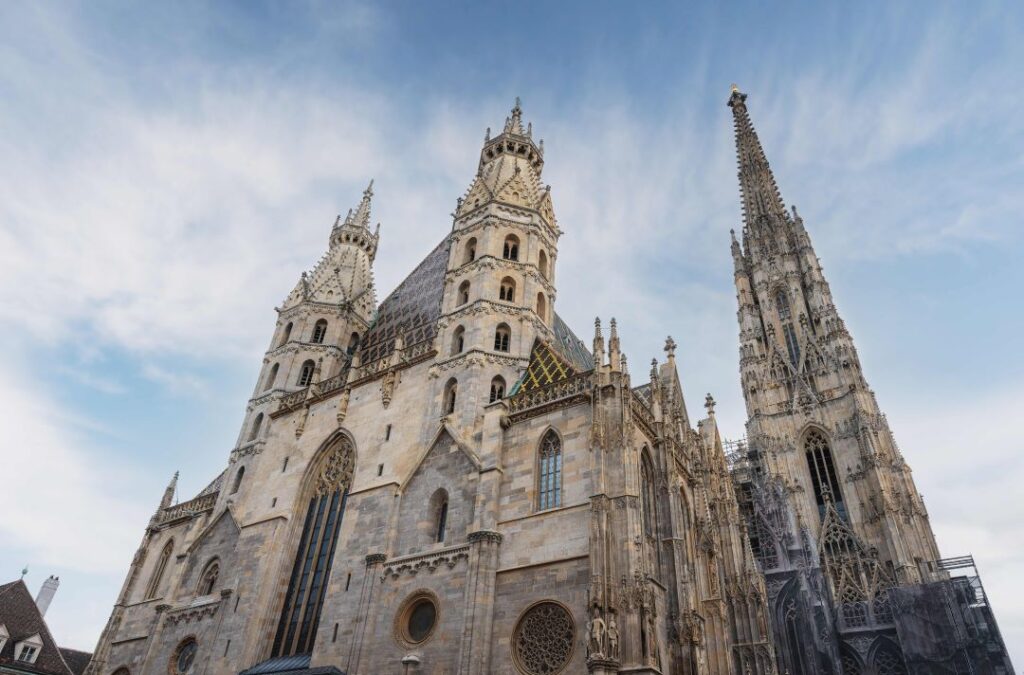
St. Stephen’s Cathedral, located in Vienna, is a masterpiece of Gothic architecture. It has been the heart of Vienna for over 700 years. The cathedral’s towering spire and colorful tiled roof are iconic. Inside, you can see stunning altars, chapels, and the catacombs. The South Tower offers panoramic views of Vienna.
The cathedral has witnessed many historical events, including the funeral of Mozart. Its intricate design and spiritual atmosphere make it a place of awe and reverence. St. Stephen’s Cathedral is not just a religious site but a symbol of Vienna’s history and resilience. A visit here is a journey into the soul of the city.
Address: Stephansplatz 3, 1010 Vienna, Austria
Opening Times: Daily, 6:00 AM – 10:00 PM
Cost of Entry: Free; Tower and catacombs tours have additional fees
4. Hohensalzburg Fortress

Hohensalzburg Fortress is one of Europe’s largest medieval castles. It sits atop the Festungsberg hill in Salzburg, offering stunning views of the city. The fortress was built in 1077 by Archbishop Gebhard. Over the centuries, it was expanded and fortified. Visitors can explore the princely chambers, museums, and the Marionette Museum.
The fortress also hosts concerts and events. Its history includes sieges, expansions, and serving as a prison. The panoramic views of Salzburg and the Alps are breathtaking. Hohensalzburg Fortress is a testament to medieval engineering and is a must-visit for history enthusiasts.
Address: Mönchsberg 34, 5020 Salzburg, Austria
Opening Times: Daily, 9:30 AM – 5:00 PM
Cost of Entry: €12.90 for adults, discounts available for children and families
5. Hallstatt See

Hallstatt See is a picturesque lake located in the Salzkammergut region. The town of Hallstatt, with its charming houses and scenic views, is often called the “Pearl of Austria.” The lake is surrounded by mountains and is perfect for boating, swimming, and fishing. Hallstatt has a rich history dating back to prehistoric times.
It is famous for its salt mines, which are among the oldest in the world. The town’s picturesque beauty and historical significance make it a UNESCO World Heritage Site. A visit to Hallstatt See offers a serene escape and a glimpse into Austria’s natural and cultural heritage.
Address: Hallstatt, 4830, Austria
Opening Times: Open year-round
Cost of Entry: Free; additional fees for salt mine tours and boat rentals
6. Grossglockner High Alpine Road

The Grossglockner High Alpine Road is one of Austria’s most scenic and famous routes. This breathtaking road takes you through the heart of the Hohe Tauern National Park, leading you to Austria’s highest mountain, the Grossglockner. The road stretches for 48 kilometers and reaches an altitude of 2,504 meters at its highest point. As you drive along, you’ll pass by stunning landscapes, including lush meadows, rocky cliffs, and glistening glaciers.
The route offers numerous viewing points where you can stop and take in the panoramic views of the Alps. The Pasterze Glacier, Austria’s largest glacier, can also be seen from the road. There are visitor centers along the way, providing information about the local wildlife, geology, and history of the area. Whether you’re driving, cycling, or hiking, the Grossglockner High Alpine Road offers an unforgettable experience of Austria’s natural beauty.
Address: 5661, Austria
Opening Times: May – October, 6:00 AM – 8:00 PM
Cost of Entry: €37 per car for the High Alpine Road
7. Melk Abbey

Melk Abbey is a stunning Benedictine monastery located above the town of Melk. It is one of Austria’s most beautiful baroque buildings. The abbey was founded in 1089 and has been a center of learning and culture. The library, with its ceiling frescoes and ancient manuscripts, is a highlight. The church is adorned with ornate altars and beautiful artwork.
The abbey gardens offer a peaceful retreat with stunning views of the Danube River. Melk Abbey is a place of spiritual and historical significance. Its architectural beauty and serene atmosphere make it a must-visit.
Address: Abt-Berthold-Dietmayr-Straße 1, 3390 Melk, Austria
Opening Times: Daily, 9:00 AM – 5:00 PM
Cost of Entry: €14.50 for adults, discounts for children and families
8. Kitzsteinhorn

Kitzsteinhorn is a glacier located in the Austrian Alps. It is famous for its year-round skiing and snowboarding. The glacier is part of the Hohe Tauern range and stands at 3,203 meters. Visitors can enjoy skiing, snowboarding, and hiking. The Gipfelwelt 3000 viewing platform offers panoramic views of the Alps.
The ICE ARENA provides fun snow activities in the summer. The Kitzsteinhorn also has an alpine center with exhibitions about the region’s geology and wildlife. Its natural beauty and range of activities make it a popular destination for outdoor enthusiasts.
Address: Kitzsteinhorn, 5710 Kaprun, Austria
Opening Times: Varies by season; generally 8:15 AM – 4:30 PM
Cost of Entry: Ski pass prices vary; Gipfelwelt 3000 entry is free with cable car ticket
9. Plansee Lake

Plansee Lake is one of Austria’s largest and most beautiful lakes. Located in Tyrol, it is known for its crystal-clear waters and stunning mountain backdrop. The lake is perfect for swimming, boating, and fishing. The surrounding area offers numerous hiking and biking trails. Plansee is connected to the smaller Heiterwanger See by a canal.
This makes it a great destination for water sports enthusiasts. The lake’s serene beauty and the opportunities for outdoor activities make it a favorite spot for nature lovers. Plansee Lake offers a tranquil escape and a chance to enjoy Austria’s natural splendor.
Address: Plansee, 6600 Reutte, Austria
Opening Times: Open year-round
Cost of Entry: Free; additional fees for boat rentals and fishing permits
10. Wachau Valley

The Wachau Valley is a picturesque region along the Danube River. It is famous for its vineyards, charming villages, and historic sites. The valley is a UNESCO World Heritage Site. Visitors can explore medieval castles, abbeys, and enjoy wine tasting. Dürnstein Castle, where King Richard the Lionheart was held captive, is a highlight.
The Melk Abbey, with its stunning baroque architecture, is also located here. The Wachau Valley offers scenic beauty and a rich cultural experience. Its rolling vineyards and historic charm make it a must-visit for anyone traveling to Austria.
Address: Wachau Valley, Lower Austria, Austria
Opening Times: Open year-round
Cost of Entry: Free; additional fees for tours and wine tastings
What is Austria’s History?
Austria’s history is rich and varied. It began with ancient Celtic tribes and was later part of the Roman Empire. In the Middle Ages, Austria became a duchy and then an archduchy. The Habsburg dynasty ruled Austria for centuries, making it a major European power. The Habsburgs expanded their empire through marriage and diplomacy. Vienna became a cultural and political hub.
In the 19th century, Austria was part of the Austro-Hungarian Empire. After World War I, the empire dissolved, and Austria became a republic. During World War II, Austria was annexed by Nazi Germany. After the war, Austria regained its independence and became a neutral country. Today, Austria is known for its cultural heritage, beautiful landscapes, and high quality of life.
How to Spend Time in Austria
Austria offers a variety of activities for every type of traveler. In Vienna, you can explore grand palaces like Schönbrunn and Hofburg, visit the historic St. Stephen’s Cathedral, and enjoy classical music concerts. Salzburg, the birthplace of Mozart, offers the Hohensalzburg Fortress and beautiful baroque architecture. For nature lovers, the Alps provide opportunities for skiing, hiking, and mountaineering.
The picturesque town of Hallstatt and the stunning lakes like Hallstatt See and Plansee are perfect for relaxation. The Wachau Valley is ideal for wine tasting and exploring medieval villages. Don’t miss the Grossglockner High Alpine Road for breathtaking mountain views. Austria’s blend of cultural and natural attractions ensures that every visitor can find something to enjoy.
Why is Austria So Famous?
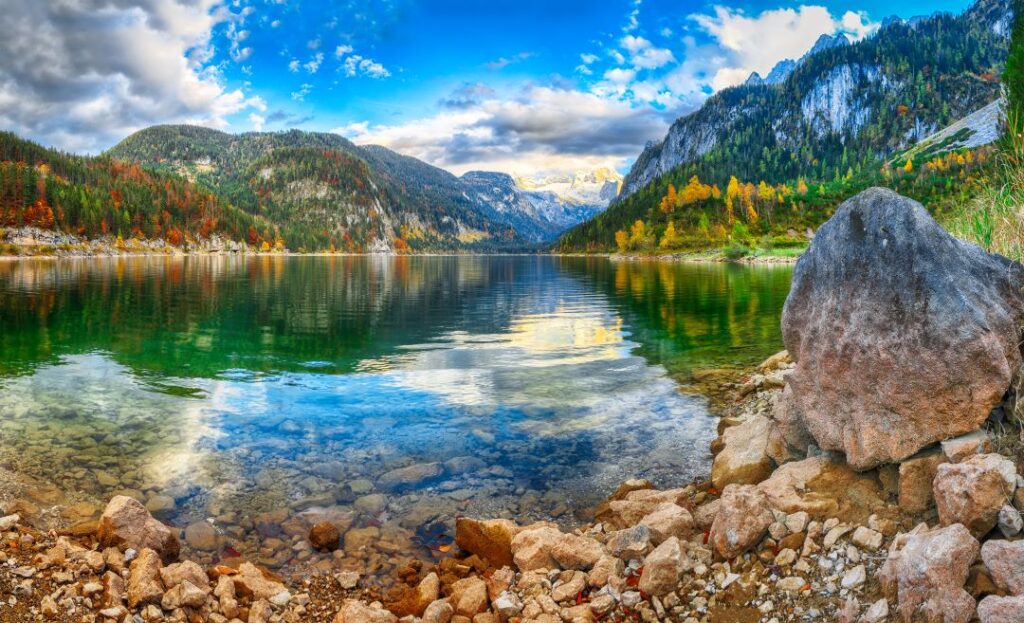
Austria is famous for its rich cultural heritage, stunning landscapes, and historical significance. It is known as the birthplace of classical music giants like Mozart, Haydn, and Strauss. The country is home to world-renowned cultural institutions like the Vienna State Opera and the Salzburg Festival. Austria’s grand palaces, such as Schönbrunn and Hofburg, reflect its imperial past.
The breathtaking Alpine scenery attracts outdoor enthusiasts for skiing, hiking, and mountaineering. Picturesque towns like Hallstatt and regions like the Wachau Valley are famous for their beauty. Austria is also known for its high quality of life, making it one of the most liveable countries in the world. Its blend of culture, history, and natural beauty makes Austria a top destination.
Is Austria Very Expensive?
Austria can be considered relatively expensive, especially in major cities like Vienna and Salzburg. Accommodation, dining, and entertainment in these cities can be pricey. However, there are ways to manage costs. Look for budget-friendly accommodations like hostels or guesthouses. Enjoy meals at local cafes and markets instead of high-end restaurants.
Public transportation is efficient and affordable, making it easy to get around without renting a car. Many museums and attractions offer discounts for students, seniors, and families. In rural areas and smaller towns, prices are generally lower. With careful planning, you can enjoy Austria’s beauty and culture without breaking the bank.
How Many Days Do You Need in Austria?
To truly experience Austria, plan to spend at least a week. This allows you to explore Vienna’s cultural and historical sites, including Schönbrunn Palace and St. Stephen’s Cathedral. Spend a couple of days in Salzburg to visit Hohensalzburg Fortress and enjoy the city’s musical heritage.
Allocate time for a day trip to Hallstatt to see its stunning lake and charming town. Dedicate a day to drive along the Grossglockner High Alpine Road for spectacular mountain views. If you love nature, spend a day hiking in the Alps or relaxing by Plansee Lake. A week gives you a good balance of city sights and natural beauty.
Why is Austria the Most Liveable Country?
Austria is considered one of the most liveable countries due to its high quality of life. It offers excellent healthcare, education, and public services. The country is known for its safety and low crime rates. Austria’s cities, like Vienna, regularly top global liveability rankings. This is due to their efficient public transport, clean environment, and cultural richness.
The natural beauty of Austria, with its mountains, lakes, and parks, provides plenty of recreational opportunities. The country’s rich cultural heritage, including music, art, and festivals, adds to the quality of life. Austrians enjoy a balanced lifestyle with a strong emphasis on family and community.
Why You Must Visit Austria
Austria is a destination that offers something for everyone. Its rich history is reflected in stunning palaces, historic sites, and charming old towns. Vienna’s grand architecture and cultural institutions are a delight for history and art lovers. Salzburg, the birthplace of Mozart, is a must-visit for music enthusiasts. The natural beauty of Austria is unparalleled. From the majestic Alps to serene lakes like Hallstatt See and Plansee, the landscapes are breathtaking. Outdoor activities like skiing, hiking, and mountaineering attract adventure seekers. The country’s high quality of life, delicious cuisine, and welcoming people make it a wonderful place to visit. Austria’s blend of culture, history, and nature ensures an unforgettable experience.
Where is Austria Located in Europe?
Austria is located in Central Europe. It is a landlocked country bordered by eight countries. To the north, it is bordered by Germany and the Czech Republic. Slovakia and Hungary lie to the east. To the south, Austria shares borders with Slovenia and Italy. Switzerland and Liechtenstein are to the west. Austria’s central location makes it a convenient gateway to other European destinations. The country’s diverse landscape includes the Eastern Alps, the Danube River, and picturesque valleys. Its central position in Europe has historically made Austria a crossroads of cultures and a significant player in European history.
Can I Do Austria in 2 Days?
While two days are not enough to see everything, you can still have a memorable experience. Focus on Vienna and Salzburg, two of Austria’s most famous cities.
Day 1: Start in Vienna. Visit Schönbrunn Palace in the morning and explore its beautiful gardens. Head to Hofburg Palace to see the Imperial Apartments and the Sisi Museum. Don’t miss St. Stephen’s Cathedral. End your day with a classical music concert.
Day 2: Travel to Salzburg. Explore the Hohensalzburg Fortress for stunning views and historical insights. Visit Mozart’s birthplace and enjoy the charming old town. If time permits, take a short trip to the beautiful Hallstatt See.
This plan offers a glimpse of Austria’s rich history and natural beauty in just two days.
What is the Best Month to Visit Austria?
The best month to visit Austria depends on your interests. For winter sports enthusiasts, December to March is ideal for skiing and snowboarding in the Alps. If you prefer mild weather and outdoor activities like hiking, May to September is perfect. These months offer pleasant temperatures and beautiful landscapes. July and August are peak tourist months, so expect more crowds and higher prices.
For a quieter experience, visit in April, May, or September. The fall months, especially October, are great for enjoying autumn foliage and wine festivals. Each season offers unique experiences, so choose the time that best fits your preferences.
Is Austria Worth Visiting?
Yes, Austria is definitely worth visiting. It offers a rich blend of history, culture, and natural beauty. The grand palaces and historic sites in Vienna and Salzburg are captivating. Austria’s musical heritage, with famous composers like Mozart and Strauss, adds to its charm. The stunning Alpine scenery is perfect for outdoor activities like skiing, hiking, and mountaineering.
Picturesque towns like Hallstatt and regions like the Wachau Valley provide a tranquil escape. Austria’s high quality of life, friendly people, and delicious cuisine enhance the experience. Whether you’re exploring historic cities, enjoying classical music, or admiring natural landscapes, Austria has something for everyone.
Conclusion

Austria is a country that captivates with its rich history, cultural heritage, and natural beauty. From the grand palaces of Vienna to the stunning landscapes of the Alps, there is something for everyone. Whether you are a history buff, a nature lover, or a music enthusiast, Austria offers a wealth of experiences. Its high quality of life and friendly atmosphere make it a welcoming destination.
With its blend of cultural and natural attractions, Austria promises an unforgettable journey. Plan your visit to explore the beauty and charm of this incredible country. Austria truly has something special for every traveler.

